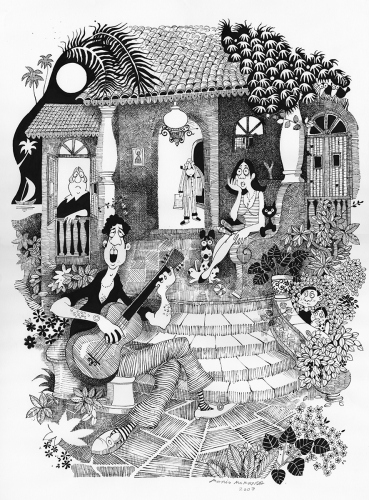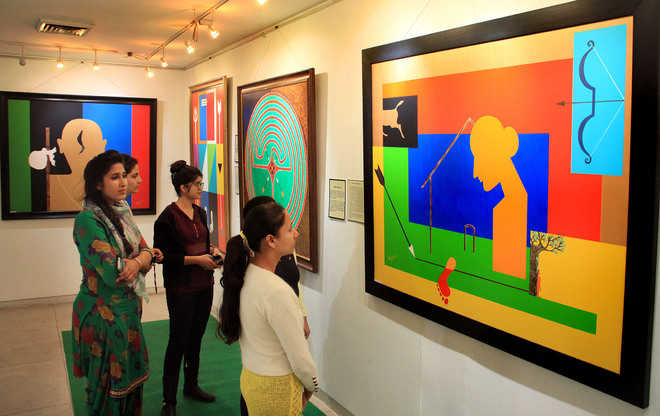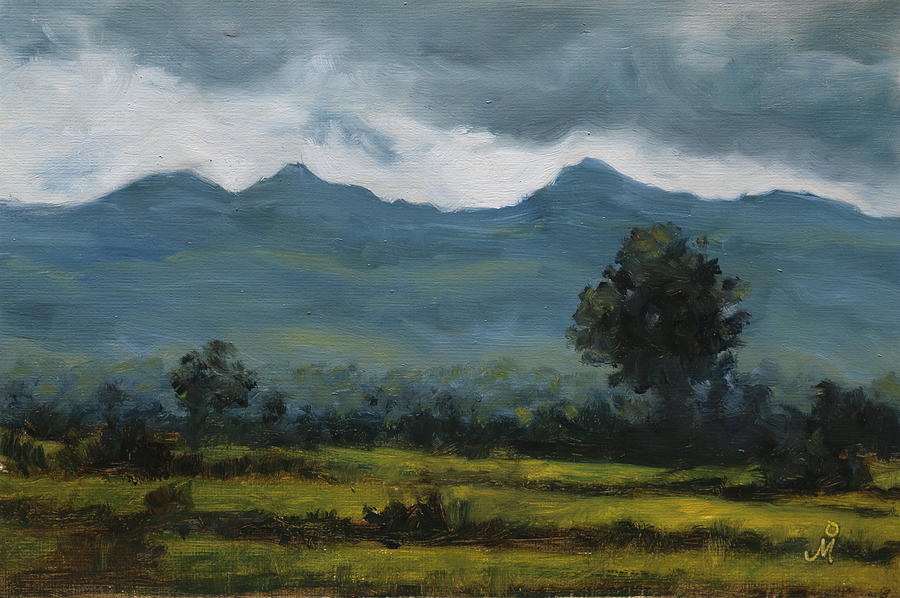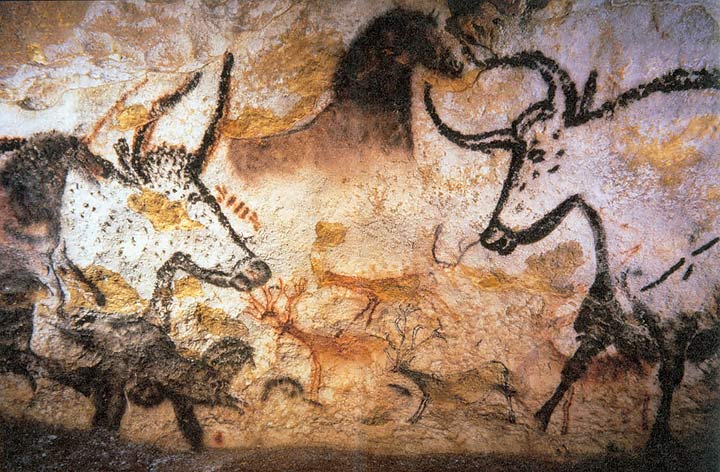A write up in response to the essay ‘The work of art in the Age of mechanical reproduction’, by Benjamin Walter.
A work of art has a context to it, which is given by the state of being of its artist at the time of its creation. That artwork is like a dot on his/her life’s line. It carries an energy that the artist created it with. The viewer can sense it, perhaps as a thought or a feeling. It is called ‘aura’ of that art.
Image Credits: Balaco-serenade-Original by Mario de Miranda
In a simple example, we can understand the concept of ‘aura’ with food. It is said that the mind of the cook influences or touches the person who eats it- The food that a mother cooks for the family feels different from the one made by the cook. The mother wants to feed the family and is filled with goodwill for it, whereas the cook handles food as an employee. The difference in the aura or the energy of the food explains why we- in spite of having eaten home food forever never get irritated with it, while even after having eaten restaurant food for continuously one week, we begin to get tired of it.
Image Credit: Tribuneindia.com
So is it true for a work of art? The thoughts of the creator enter and stay with the creation. The thoughts characterize the creation and it is that aura that influences the people who might be maddeningly overwhelmed by it or tend to just miss it. As the state of mind of the viewer, so will be the kind of art he/she can relate to. It makes it a personal connection with that creation. Thus seeing the original art is it’s authentic experience, than its photograph.
Image Credits: by Andrew Keola (Pinterest)
Mechanical reproduction, i.e. a photograph or a video, overrules this most significant experience of art. But since the machine age offered the amusement of offering multiple copies at doorsteps around the world, at a minuscule price, the masses have been fed with printouts as the ‘experience of art’. The original has something else to offer than its image stuck on the fridge door. People who probably have not seen an original Piet Mondrian or Jackson Pollock, but seen their A4 size reproductions in books are likely to form an opinion about them, and their genre, based on those photographs. Could this explain the absence of realistic appreciation of art or the presence of a gap between the masses and the art that art fraternity often complains about? So many artists struggle to scrape a living because, in their opinion, people cannot justify the cost of the original and find it sensible to spend on the printouts sold at frame shops. Such profound has been the spell of the cost benefit of mass scale mechanical reproduction that masses tend to evaluate objects they want to include in their lives like one would select a bank for a FD (fixed deposit) scheme.
Copyright Jackson Pollock Source: www.wikiart.com
In my opinion, be it classes or masses, everybody needs art. I am not an art collector, but in my house, there is a 10 X 10″ acrylic painting of a monsoon landscape of western Ghats, drawn by an artist friend. I picked it not only because I liked it, but because it was affordable.The strokes in the work are so joyful and forceful that I can sense the fun the artist had had in being at that spot and in trying to grasp it on canvas. The canvas has textures of thick and thin paint. What I feel is that those colours and that surface were touched by someone’s gifted hands. Those valuable hands exist there with that painting. When I see it at the end of a day, there is a certain freshness, a certain spontaneity that it kindles. And, although I had initially wondered if I would get bored looking at that same picture forever, I don’t. The impulse of a newfound joy of monsoon stays forever.
Image Credits: Retreating Monsoon-by Mandar Marathe
On the other hand, an aspect of too much availability of visually engaging ‘manufactured’ material, like films, photography, coffee table books, illustrated books, comics, graphic novels, sign ages, advertisement billboards, exhibition design, package design etc. is the ignorance in engaging with the world through any other senses, more so the sixth sense. And with so much of visual feeding, one tends to get lethargic in even engaging the mind with it along with the eyes. The classic example is to munch through a crass movie and not feel anything wrong. It explains the emotional immunity that is said to be the characteristic of the present times over the preceding ones.
If science is to be the manual for acceptance of things which exist in the world, then ‘aura’ perhaps just does not exist. It means that even if you are agreeing to eat restaurant food over home food every day, the sense of dissatisfaction in the heart has nothing to do with the food but perhaps with the bacteria in it. And this actually symbolizes cultural starvation.
Image Credits: Lascaux cave painting (www.wikimedia.org)
Artworks, in the history, have also enjoyed an extremely elevated status without any exhibitionism. The prehistoric man drew several animals like bulls and horses on the walls of caves at Lascaux. The belief was that when he drew them, they would appear outside in reality. So his drawings were his resource. Therefore, to safeguard and keep the resource private, he worked his drawings in deep caves which no one would know. Such strong was the belief in the spirit of the creation.
A direct engagement with art through museums and galleries as well as including it in one’s life in any small way, to begin with, can allow for a relationship to grow. Even if it is a painting you liked from a tribal outreach shop it is still someone’s handmade creation and is beautiful in that way. We need art just as much we need innocence, just the way we need children in a civilization.
-by SaketMehendale.
I am a 34 year old self taught artist and academically a landscape architect, from Pune. I received my training in drawing as an extra curricular class in high school. After two years from graduation did I turn to drawing more seriously as a form of exploration. I liked working in dry media like graphite, charcoal and pastels and have dabbled hands in water colours. The first collection of drawings of Himalayan landscapes was exhibited in August 2009 and the encouraging response and the urge to create more, set the ball gradually rolling. Nature being the all-time inspiration my subject matter explored nightscapes, trees & parks, Konkan and water lilies in consecutive collections and art shows. I think drawing as a form of art is strongly driven by intuition unlike the field of design which became academic and professional parallel. I admire the arts because they are free will expression that need not require to be explained. In future I hope to explore more subjects in art.





